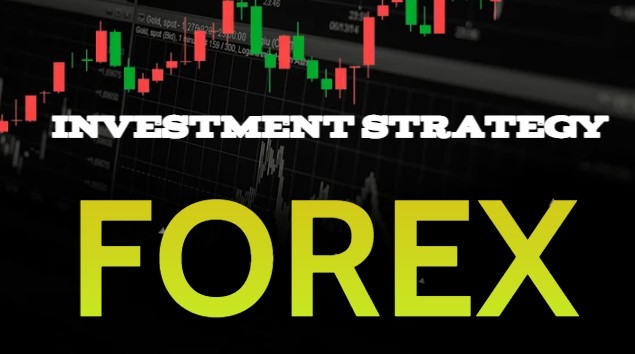
The Ultimate Guide to Forex Trading: Strategies, Tips, and Tools for Success
Introduction
Forex trading, or foreign exchange trading, is the act of buying and selling currencies to profit from changes in exchange rates. It’s the largest financial market in the world, with a daily trading volume exceeding $6 trillion. Whether you’re a beginner or an experienced trader, this guide will provide you with the strategies, tips, and tools you need to succeed in Forex trading.
What is Forex Trading?
Forex trading involves exchanging one currency for another at agreed-upon prices. Traders aim to profit from fluctuations in exchange rates by buying low and selling high, or vice versa.
Why Trade Forex?
Forex trading offers several advantages, including high liquidity, 24-hour market access, and the potential for significant profits. It’s also accessible to traders with various levels of experience and capital.
Understanding the Forex Market
How the Forex Market Works
The Forex market operates over-the-counter (OTC), meaning there is no centralized exchange. Trading occurs directly between participants via electronic communication networks (ECNs) and phone networks.
Major Currency Pairs
The most traded currency pairs are known as the “major pairs,” which include EUR/USD, USD/JPY, GBP/USD, and USD/CHF. These pairs typically have high liquidity and low spreads.
Forex Market Participants
Market participants include central banks, financial institutions, corporations, hedge funds, and individual traders. Each plays a unique role in the Forex market, contributing to its liquidity and dynamics.
Getting Started with Forex Trading
Choosing a Forex Broker
Select a reputable broker with competitive spreads, robust trading platforms, and strong regulatory oversight. Consider factors like customer service, account types, and deposit/withdrawal options.
Setting Up a Trading Account
Opening a trading account involves selecting an account type, submitting personal identification documents, and funding the account. Many brokers offer demo accounts for practice trading.
Basic Forex Terminology
Familiarize yourself with key terms like pips, lots, leverage, and margin. Understanding these terms is crucial for navigating the Forex market effectively.
Fundamental Analysis
Economic Indicators
Economic indicators such as GDP, employment data, and inflation reports can significantly impact currency prices. Stay informed about key economic releases and their expected effects on the market.
Political Events and Forex
Political stability and events such as elections, policy changes, and geopolitical tensions can influence currency values. Monitor news and developments to anticipate market movements.
Central Bank Policies
Central banks control monetary policy, influencing interest rates and currency supply. Statements and actions from central banks like the Federal Reserve and the European Central Bank are closely watched by Forex traders.
Technical Analysis
Understanding Price Charts
Price charts display currency price movements over time. Common chart types include line charts, bar charts, and candlestick charts, each providing different insights into market trends.
Key Technical Indicators
Technical indicators like moving averages, Relative Strength Index (RSI), and Bollinger Bands help traders identify trends, momentum, and potential reversal points.
Chart Patterns
Chart patterns, such as head and shoulders, double tops/bottoms, and triangles, can indicate future price movements. Learning to recognize these patterns is essential for technical analysis.
Trading Strategies
Scalping
Scalping involves making numerous small trades to profit from minor price movements. It’s a high-frequency trading strategy that requires quick decision-making and execution.
Day Trading
Day trading involves opening and closing positions within a single trading day. This strategy avoids overnight risk but requires constant market monitoring.
Swing Trading
Swing trading aims to capture price swings over several days or weeks. It balances the need for active management with the opportunity for significant gains.
Position Trading
Position trading involves holding positions for months or even years, based on long-term market trends and fundamental analysis. It’s suitable for traders with a longer investment horizon.
Risk Management
Setting Stop-Loss Orders
Stop-loss orders automatically close a position at a predetermined price, limiting potential losses. They are crucial for managing risk in Forex trading.
Position Sizing
Determine the size of your positions based on your risk tolerance and account size. Avoid overleveraging, which can lead to significant losses.
Diversification
Diversify your trading portfolio by spreading investments across different currency pairs and strategies. This reduces overall risk and exposure.
Psychology of Trading
Managing Emotions
Emotions like fear and greed can cloud judgment and lead to poor trading decisions. Develop a trading plan and stick to it to maintain discipline.
Discipline and Patience
Successful trading requires discipline and patience. Avoid impulsive trades and adhere to your strategy, even during periods of market volatility.
Developing a Trading Plan
A trading plan outlines your trading goals, risk tolerance, and strategies. It serves as a roadmap to guide your trading decisions and keep you focused.
Tools and Resources for Forex Traders
Trading Platforms
Choose a trading platform that offers advanced charting tools, real-time data, and a user-friendly interface. Popular platforms include MetaTrader 4, MetaTrader 5, and TradingView.
Analytical Tools
Utilize analytical tools to enhance your market analysis. Tools like economic calendars, sentiment indicators, and news feeds provide valuable insights.
Educational Resources
Continuously educate yourself through books, online courses, webinars, and forums. Websites like BabyPips and Investopedia offer comprehensive educational content for Forex traders.
Common Forex Trading Mistakes
Overleveraging
Using excessive leverage can amplify losses. Trade with appropriate leverage to manage risk effectively.
Ignoring Risk Management
Neglecting risk management can lead to significant losses. Always use stop-loss orders and position sizing to protect your capital.
Chasing Losses
Attempting to recover losses by making larger trades can result in further losses. Stick to your trading plan and avoid emotional decision-making.
Advanced Trading Techniques
Automated Trading Systems
Automated trading systems use algorithms to execute trades based on predefined criteria. They can help eliminate emotional bias and improve execution speed.
Hedging Strategies
Hedging involves taking offsetting positions to reduce risk. It can protect against adverse market movements and provide more stable returns.
Carry Trade
Carry trade involves borrowing in a currency with a low-interest rate and investing in a currency with a higher interest rate. It profits from the interest rate differential between the two currencies.
Regulations and Legal Considerations
Understanding Forex Regulations
Forex regulations vary by country. Ensure your broker is regulated by a reputable authority, such as the Financial Conduct Authority (FCA) in the UK or the Commodity Futures Trading Commission (CFTC) in the US.
Choosing Regulated Brokers
Trading with a regulated broker ensures a higher level of security and transparency. Regulated brokers are subject to strict standards and oversight.
Legal Considerations for Forex Traders
Be aware of tax obligations and reporting requirements related to Forex trading. Consult with a tax professional to ensure compliance with local laws.
Building a Forex Trading Portfolio
Long-term Investment Strategies
Incorporate long-term investment strategies, such as position trading and carry trade, to build a diversified Forex portfolio.
Balancing Risk and Reward
Assess the risk-reward ratio of each trade and strategy. Aim for a balanced portfolio that aligns with your risk tolerance and investment goals.
Monitoring and Adjusting Your Portfolio
Regularly review your trading performance and adjust your portfolio as needed. Stay informed about market conditions and economic developments.
Conclusion
Forex trading offers immense potential for profit but requires knowledge, strategy, and discipline. By understanding the market, utilizing effective trading strategies, and managing risk, you can increase your chances of success. Remember, continuous learning and adaptation are key to thriving in the dynamic Forex market.
FAQs
What is the best time to trade Forex?
The best time to trade Forex is during periods of high liquidity, typically when major financial centers like London, New York, and Tokyo are open. The overlap between the London and New York sessions is especially active.
How much money do I need to start Forex trading?
The amount needed to start Forex trading varies by broker and account type. Some brokers offer accounts with minimum deposits as low as $100, but it’s recommended to start with at least $500 to $1,000 for better risk management.
Can I trade Forex part-time?
Yes, many traders successfully trade Forex part-time. The 24-hour nature of the Forex market allows for trading opportunities outside regular working hours.
What are the most common Forex trading strategies?
Common Forex trading strategies include scalping, day trading, swing trading, and position trading. Each strategy has its own time frame and approach to market analysis.
How do I choose a Forex broker?
Choose a Forex broker based on factors such as regulatory status, trading platform, spreads, customer service, and available account types. Research reviews and compare brokers to find one that meets your needs.








